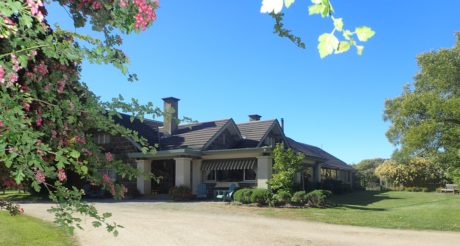We say things we regret, we feel things – anger, resentment, jealousy, that are toxic to ourselves and others; and we act on impulse instead of with forethought. How can we change this destructive behaviour?
The answer is: to take note of what is happening and be curious about it.
This is a deceptively simple instruction that nonetheless has tremendous power. What does it mean? And how do you do it?
Being the witness, the watcher, the observer, has been a part of meditative practice for centuries, but what this really means is not often explained in a way that makes practical sense.
The main source of both personal power and peace of mind is taking responsibility for your own responses. You must take full responsibility for the response you create to whatever is happening. If you cannot fully acknowledge that you are creating your own response to everything that happens, you are a helpless victim. Only when you take responsibility is there a possibility of doing something about your situation or creating something different.
So, first, you must acknowledge that whatever you experience in life, it is your response that matters. Life may provide the stimulus, but you create the response. Sometimes this response comes from an unconscious part of you, one you seemingly have little or no control over, but nonetheless, it comes from you rather from a force outside of you. If you are having any discomfort or suffering in life, it is because somewhere, on some level, there is resistance to acknowledging your own role in it.
Here is where the concept of noticing, of being the observer, comes into play. If resistance is the poison, noticing is the antidote. If you can step back and notice whatever is happening, with no judgement for the outcome, the resistance (and suffering) disappears.
All personal change involves the practise of noticing, which involves a deeper awareness of what is actually happening.
All personal change involves the practise of noticing, which involves a deeper awareness of what is actually happening. Most of us have very elaborate strategies designed to keep us unaware, but there is a very simple way to defeat them.
Firstly, try to step back the next time you are feeling any kind of discomfort, and say to yourself, “here I am, feeling angry” (or whatever it is you are feeling) and then simply notice yourself being angry, without trying to stop it or change it, without any agenda for what should happen. Just observe your own response.
Secondly, try to feel in your body where you feel the anger, guilt or whatever you suffer. Notice where exactly in your body you feel it. Become genuinely curious about it. Bring your attention to bear on whatever is happening for you in that moment.
Whatever uncomfortable feelings you are having, you’ve probably been having them for a long time. But I would be willing to bet that you have never really watched them with the type of interest necessary to discover what is really happening. You’re probably too busy beating yourself up or blaming someone else.
Once you begin to exercise curiosity about your responses to certain situations you begin to shift away from suffering. And as you get better at noticing it becomes obvious that there are different choices about how to respond to the same situation. It takes practice and willpower because our suffering and discomfort is deeply ingrained. But take heart – it will become increasingly effortless to transform a situation of pain and suffering into something that calms and empowers you.
“A thought is harmless unless we believe it. It’s not our thoughts, but our attachment to our thoughts, that causes suffering. Attaching to a thought means believing that it’s true, without inquiring. A belief is a thought that we’ve been attaching to, often for years.” ― Byron Katie, Loving What Is: Four Questions That Can Change Your Life
People with “higher consciousness” or “expanded awareness” are those who have mastered this principle of noticing with curiosity.
You can do it, too. Start practicing.
It is common for people who experience the care I provide to comment on how much easier it is for them to be aware of their responses, thoughts and judgements after a few sessions.
They report feeling “more connected” which reflects a release of the bodily tensions that restrict their ability to notice their responses. This is the process of healing.
You may be wondering what else you can do to help with your ability to notice. Here are some simple ways which I recommend you look into:
- Byron Kate’s “The Work”. A simple process of inquiry which help you question your thoughts. http://thework.com/en/do-work
- Logosynthesis. Using simple statements to to resolve negative beliefs, to let go of fear and trauma, and to lift the burden of grief or physical pain. http://www.logosynthesis.net/
- Heart Math Institute. There are many resources available on the Heart Math Institute website. A good start is at https://www.heartmath.org/resources/heartmath-tools/quick-coherence-technique-for-adults/
Please feel free to contact me, Ken Stewart 0428 660 038, if you would like to discuss the care I provide and the techniques I have mentioned here.

